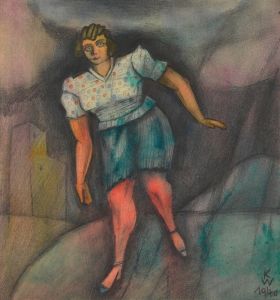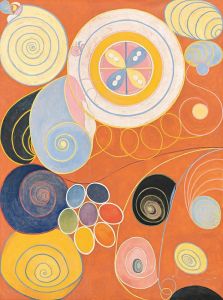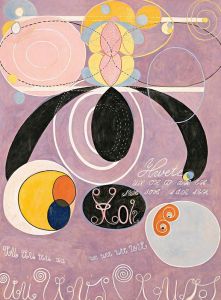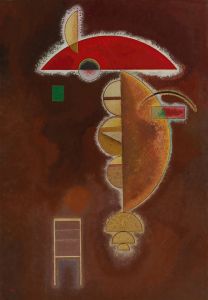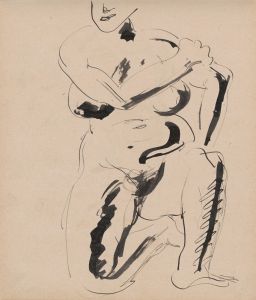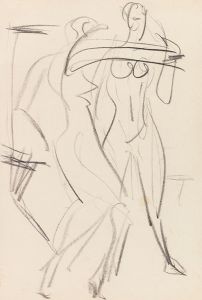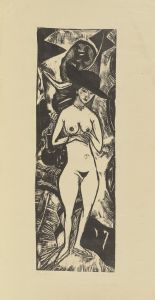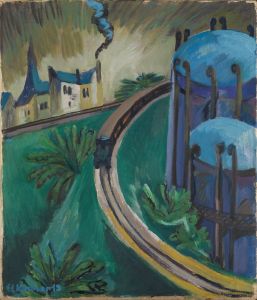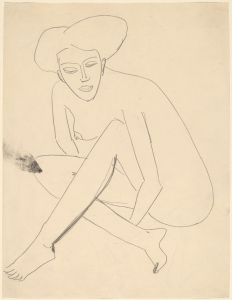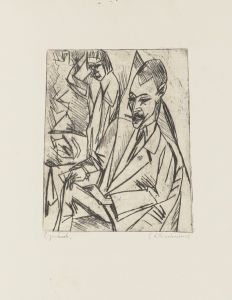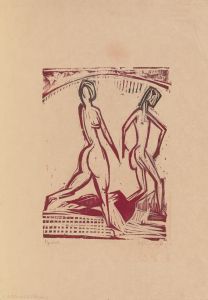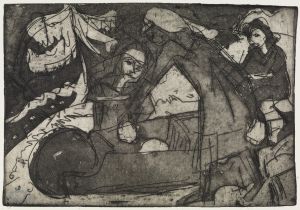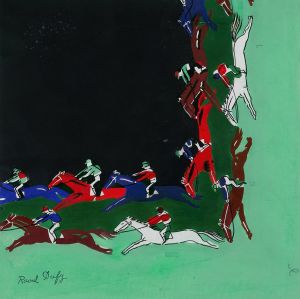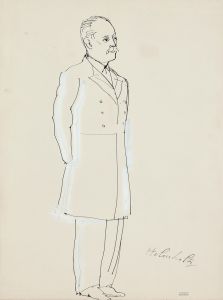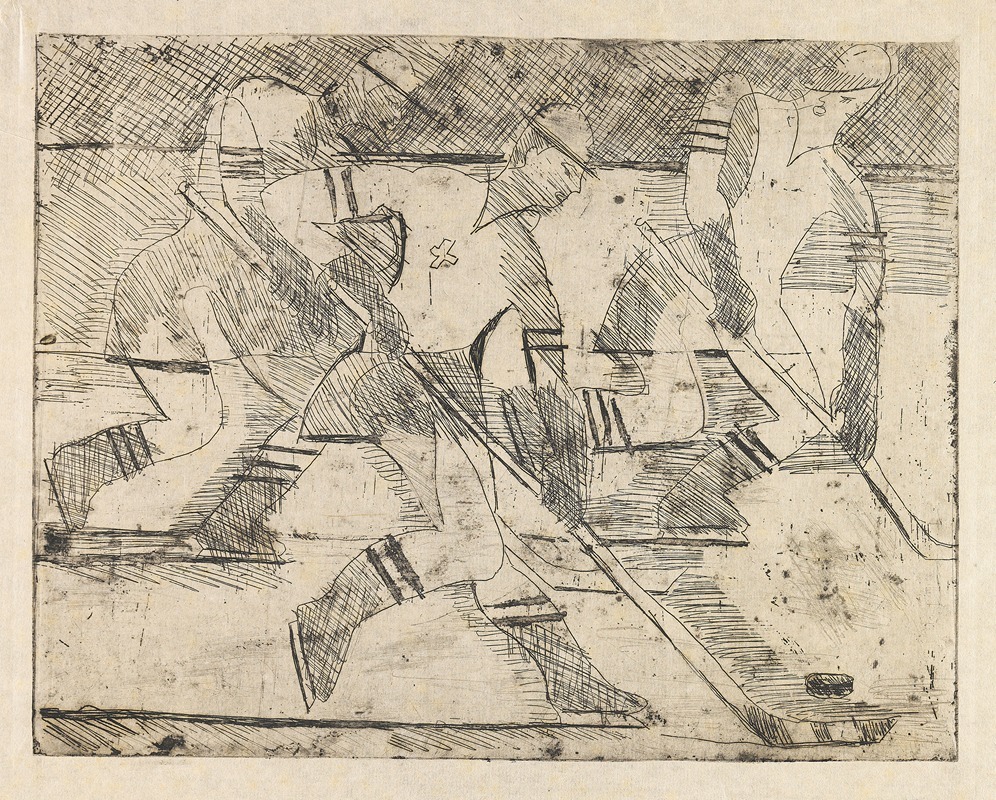
Eishockeyspieler
A hand-painted replica of Ernst Ludwig Kirchner’s masterpiece Eishockeyspieler, meticulously crafted by professional artists to capture the true essence of the original. Each piece is created with museum-quality canvas and rare mineral pigments, carefully painted by experienced artists with delicate brushstrokes and rich, layered colors to perfectly recreate the texture of the original artwork. Unlike machine-printed reproductions, this hand-painted version brings the painting to life, infused with the artist’s emotions and skill in every stroke. Whether for personal collection or home decoration, it instantly elevates the artistic atmosphere of any space.
Ernst Ludwig Kirchner, a prominent German expressionist painter and one of the founding members of the influential art group Die Brücke, created the painting "Eishockeyspieler" (Ice Hockey Players) in 1931. This work is a vivid example of Kirchner's dynamic style and his interest in capturing the energy and movement of modern life.
Kirchner was known for his bold use of color and expressive brushwork, which are evident in "Eishockeyspieler." The painting depicts a group of ice hockey players in action, rendered in a manner that emphasizes speed and motion. The figures are elongated and somewhat distorted, a characteristic feature of Kirchner's style, which he used to convey emotional intensity and the physicality of the scene. The players are shown in various poses, suggesting the fast-paced nature of the sport, with their bodies and sticks creating a rhythmic composition across the canvas.
The background of the painting is relatively abstract, with broad swathes of color that suggest the icy surface of the rink and the cold atmosphere of the setting. Kirchner's use of color is particularly striking; he employs a palette of blues, whites, and contrasting warm tones to create a sense of vibrancy and immediacy. This color scheme not only captures the chill of the ice but also the excitement and energy of the game.
"Eishockeyspieler" reflects Kirchner's fascination with movement and his desire to depict the modern world in a way that was both innovative and expressive. During the early 20th century, sports and leisure activities became popular subjects for artists who were interested in the dynamism of contemporary life. Kirchner, like many of his contemporaries, was drawn to these themes as they offered an opportunity to explore new forms of expression and to break away from traditional artistic conventions.
The painting also illustrates Kirchner's interest in the human figure and his ability to convey emotion and movement through form and color. His approach was influenced by various sources, including African and Oceanic art, which he admired for their directness and vitality. This influence is evident in the simplified forms and strong outlines of the figures in "Eishockeyspieler."
Kirchner's work, including "Eishockeyspieler," was part of a broader movement within German expressionism that sought to capture the emotional and psychological experience of modern life. This movement was characterized by a rejection of realism in favor of more abstract and symbolic representations. Kirchner and his fellow artists in Die Brücke played a crucial role in the development of expressionism, which would go on to have a significant impact on the course of 20th-century art.
Today, "Eishockeyspieler" is recognized as an important example of Kirchner's mature style and his contribution to expressionism. The painting is held in high regard for its innovative approach to composition and its ability to convey the excitement and energy of its subject matter. Through works like this, Kirchner has left a lasting legacy as one of the leading figures in modern art.





